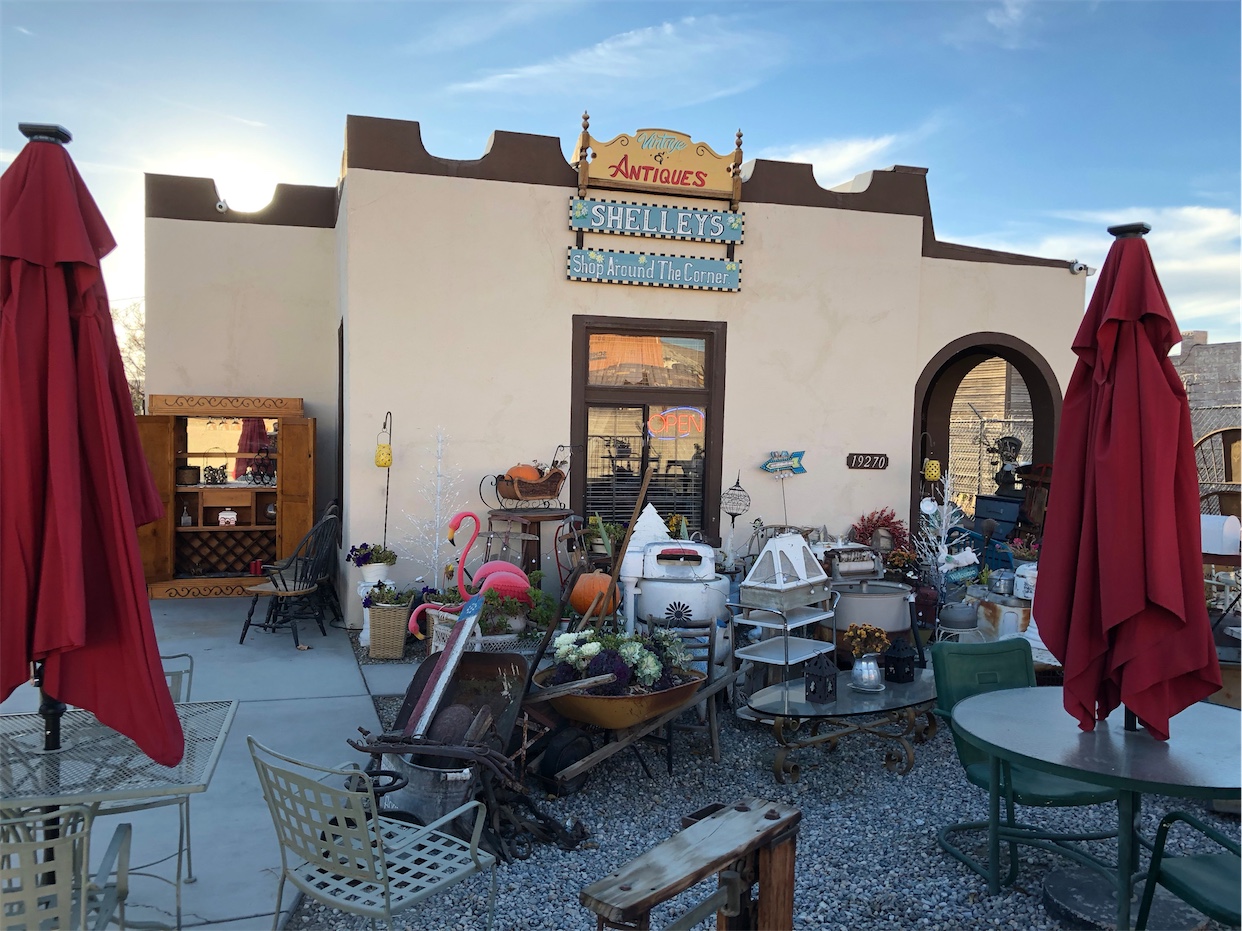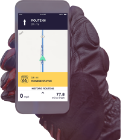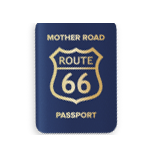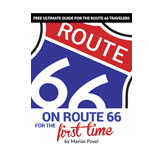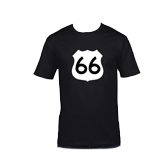FAQ
What does an international tourist need to know about driving in the USA?
Automatic gears
It’s next to impossible to rent a car with a manual gear (“stick shift”) in the US. All rental cars seem to have an automatic gear.
There are two problems if you’ve never driven one before:
- You need to be extra careful with your left foot: if it seeks the clutch, it’s very likely to find the (wide) brake and slam it way too hard. Better hope nobody was too close on your tail. A possible trick is to put your left foot in a strange position behind/under the right one, or under the seat till you get used to not needing it. [It takes a little while to get used to, and you need to be extra careful when tired as your long-term automatic reactions might win again at that time].
- The other part is that a car with an automatic gear doesn’t roll backward on slight slopes, but it does so -violently- on steep slopes. If they gave you a car with a foot operated “hand”-brake, you might find yourself at a loss how to get going on a steep uphill.
This is the trick to do it most smoothly:- Just ignore the “hand”-brake and after you stop, place your left foot next to your right foot on the brake pedal (it’s wide enough for 2 feet).
- Next, shift your right foot off of the brake and onto the accelerator, while holding the brake with your left foot.
- When ready to drive again: Press the accelerator first while still holding the brake with your left foot.
- As the car will try to drive through the brakes, you release the brake slowly, just like you would release a clutch. You’ll feel when the automatic clutch grips as you rev the engine.
There are very few places on Route 66 that will need this technique, but remember, it exists should you need it.
Right side
Driving on the right side of the road for people used to drive on the left side: It’s harder, nobody will argue that. But you learn it quickly enough.
Your shifted position in the car helps a lot as a constant reminder. Do take great care when driving while tired and take special care on your first few miles (being jet-lagged does not help). The gear on a US rental car is almost always an automatic one, so shifting gears should not be a big issue to get used to.
Take special care on parking lots and with turns as your normal position on the road might inadvertently win out.
Traffic
Driving in the US is generally relaxed compared to Europe. So: relax as well, you’re on holiday, not out there to win a race.
A wise man said: “Consider the other drivers armed: do not challenge, do not confront, just let them go their way and you go yours”. A friendly thank you to somebody doing something wrong to you might be much more disarming than any rude language or gesture. Just suppress the latter, don’t even return an obscene gesture. The last thing you want is to become a victim of road rage.
Traffic in the big cities (Chicago and Los Angeles especially) can get very busy. But in general, it will continue to flow somewhat. So, you’ll get where you want to be. It’s probably just not going to be as soon as you wanted it to be.
Many Route 66 fans miss out on big parts of Route 66 in the greater Los Angeles area because they underestimate the amount of time needed. Plan a day to get from San Bernardino to both endpoints (downtown L.A. and Santa Monica) at least.
Similarly: allow -if possible- a bit of recovery from the jet-lag after you land.
Traffic rules and habits
Things in the traffic habits and rules in the US that you might have to adjust to:
- Locals tend to drive a bit over the speed limit. Take care if you follow their example: e.g., Arcadia, OK has a zero tolerance towards speeding and is basically a huge speed trap for tourists. Worst of all: the tickets are very expensive.
- In the US, stopping at a stop sign is taken very literally (compare it to having the examiner sitting in the car on your driving test): Full and complete stop for every individual car. Stopping as the second car in a row of cars doesn’t count, you need to drive up and stop while being the first car. Even on a deserted intersection, they will stop for a stop sign.
- There is no default rule of priority from the right (or the left) in the absence of any signs. The rule is simple: the one to stop first gets to go first as soon as the second car stops. This leads to somewhat of a tendency to race to the stop. Also, this means that you should get to the stop without dragging your feet too long as the other driver is waiting for you to come to a stop before they are allowed to start driving again.
- The round-robin system (where one car goes on from each direction, and the rest behind it nicely waits their turn) takes some getting used to before you know when it’s your turn. Mind the order you stopped in: that’s the order you start in again.
- School buses with blinking red lights: you stop, and wait for however long it takes for the bus to turn off those lights, even if you drive in the opposite direction.
- A double yellow center line is like a wall: no crossing.
- A center section with solid yellow lines on the outside and dashed yellow lines on the inside (wide enough to hold a car) is used to make left turns. Both to leave the road and to get on the road before merging with the traffic as well.
- Keep your lane principle: you stay in the lane you’re in. You don’t pop out in front of somebody (cutting them off) or get surprised at being overtaken on both sides by two big rigs driving even more over the speed limit than yourself.
- Speed limits are in zones; they don’t stop at the next intersection, they stop where the next zone begins.
- A blinking red traffic light is identical to a stop sign.
- A blinking yellow traffic light is just a reminder to use the default rule.
- Turn right on red (in all states nowadays) is allowed: you come to a full stop and yield but are allowed to make the turn through the red traffic light. It’s only allowed from the rightmost lane onto the rightmost lane.
Exceptions: a right-hand arrow that is red, signs prohibiting turn on red, or in New York City. Caution: after a while, it feels natural, make sure not to do it back home. If you don’t do this in cities, the drivers behind you might get impatient. - Turn left on red also exists in some locations: It’s intended to be done onto one-way streets for obvious reasons, but the rules are rather complex and change depending on where you are. As an international visitor, it’s best to refrain unless it’s posted it’s OK to do so.
- If a police officer should pull you over: keep calm and stay in the car. Never get out unless instructed to do so. Keep your hands visible at all times. Turn off the engine and put the keys on the dashboard. Remember the “consider the other drivers armed”: the cops do that too, so they are very cautious, and it might take them a long while just waiting for back-up before they make any move. Just be patient and stay put.
- One-way signs: the arrow on the sign is important, it points in the direction of the traffic. When you’re used to the signs we get in Europe: they do stand out much less than what you’re used to when going in the wrong direction.
- Move over or slow down for stopped vehicles on the shoulder of an Interstate. In many states it’s a law that you do this, esp. so for emergency vehicles.
- They give a lot of room to emergency vehicles. Even when merely driving in the opposite dirction, they’ll pull right off of the road and stop to give as much as space as possible, even when it’s clear the emergency vehicle will not need all that space.
- Roundabouts and traffic circles exist in the US, even on Route 66. But they are rare and unusual for many of the locals. If you’re from an area where they are omnipresent, take care as you’re too used to them compared to the other drivers. Assume they’ll make what you’d perceive as rookie mistakes with lane choices, indicator use etc.
Alcohol & Driving
The details of the rules for driving while having consumed alcohol are state dependent. The same goes for penalties and consequences. There are also different rules for commercial drivers etc.
For young people, the limits are significantly lower than for slightly older adults (and remember those below 21 should not even be able to obtain alcohol at all in the US).
International tourists might be surprised by a few rules in the US:
- There cannot be an open container with alcohol in the car (even if the driver is sober and not drinking)
- If you drank too much and would think of sleeping it off in your car, not even sitting behind the wheel: don’t. It’s not legal to do so.
In the end enforcement is pretty strict, so don’t take any chances.
Driver’s Handbook
Every state has slightly different rules, but the principles and important rules are the same among most of the states.
A list of rules of the road or driver’s handbooks for the different states Route 66 crosses:
It’s a good read to pick even just one if you never drove in the US and are unsure of what to do. It’s in essence the guide for Americans who want to obtain a driver’s license.
Motorcyclists will find that helmet laws differ quite a bit among the states [more info].
